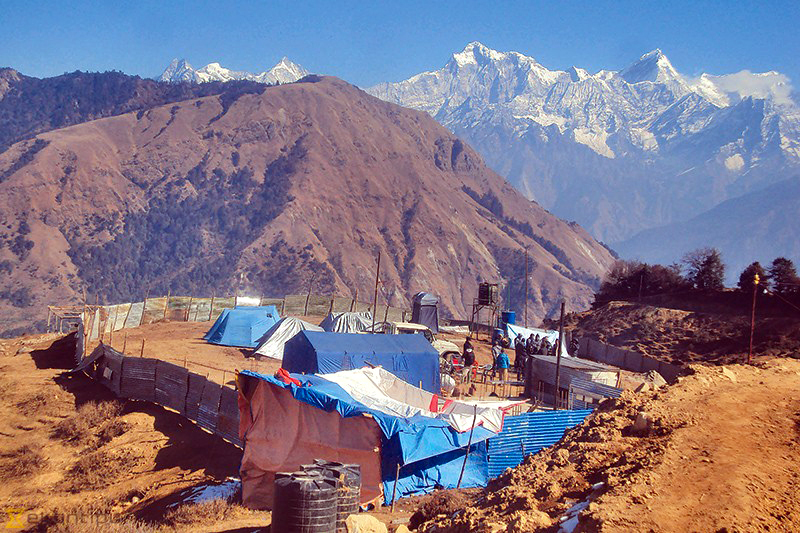Gorkha, January 12, 2017:Â Earthquake displaced people from Laprak, Gorkha, are busy building temporary shelters not far away from the camp-ground at Gupsipakha where they had been living since April 2015. They have vacated the camp-ground where the Non Resident Nepali Association has started the construction of a housing facility to shelter the displaced families.
Workers are currently levelling the ground and the camp dwellers have been asked to build their shelters elsewhere for the time being.
Man Bahadur Gurung, who had been living with his family at Gupsipakha camp-ground, said he was constructing the third shelter for his family after the earthquake destroyed their home.
“The NRNA has started the housing facility for us at the camp-ground, so we are moving out to allow the workers develop the project,†he said.
The earthquake survivors living at Gupsipakha camp-ground are pleased that the NRNA was finally building them proper shelters. And for that they do not seem to be bothered by the cold that they are being exposed to every night inside flimsy huts cobbled out of tarpaulin sheets, sticks and worn-out tents that were provided by donor agencies after the earthquake.
The NRNA has agreed to build 573 houses with running water facility and solar panels for electricity for the earthquake displaced families at Gupsipakha. It also plans to construct a school building, a health post building, a community building and a building for Gurung museum.
The project is expected to take 10 months to complete.
“We plan to complete the project by October and hand over the houses to the earthquake survivors on the occasion of the NRNA Day on October 11,†said Rajendra Bhatta, who is overseeing the construction. “Each family will have a two-storey home with four rooms built on a land measuring three annas and three paisa.â€
He added that the NRNA is planning to turn Laprak into a model village and develop it as a tourist destination.
By Sudip Kaini







